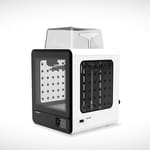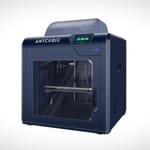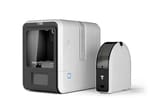FlashForge has released a new 3D printer in their Adventurer lineup, the Adeventurer 4: a 220 x 200 x 250 mm fully enclosed system for $799. The system features broad material compatibility, thanks to its range of high-heat quick-release nozzles and a HEPA air filter, which could make it the ideal printer for home use.
The Adventurer 4’s predecessor, the FlashForge Adventurer 3, was a successful 3D printer with some major caveats that warded away some higher-level users. It looks like some of those issues may have been addressed in this latest release, including third-party slicer compatibility and a larger enclosed spool holder to fit standard one-kilogram filament spools.
All told, the Adventurer 3 was an okay machine for its price, but the compatibility restrictions ultimately limited its best use case to newcomers and within education. We’re hoping the increased slicer compatibility is a sign that FlashForge is opening things up in a way that invites advanced users to tinker with this interesting new system.
Features
HEPA13 Air Filter
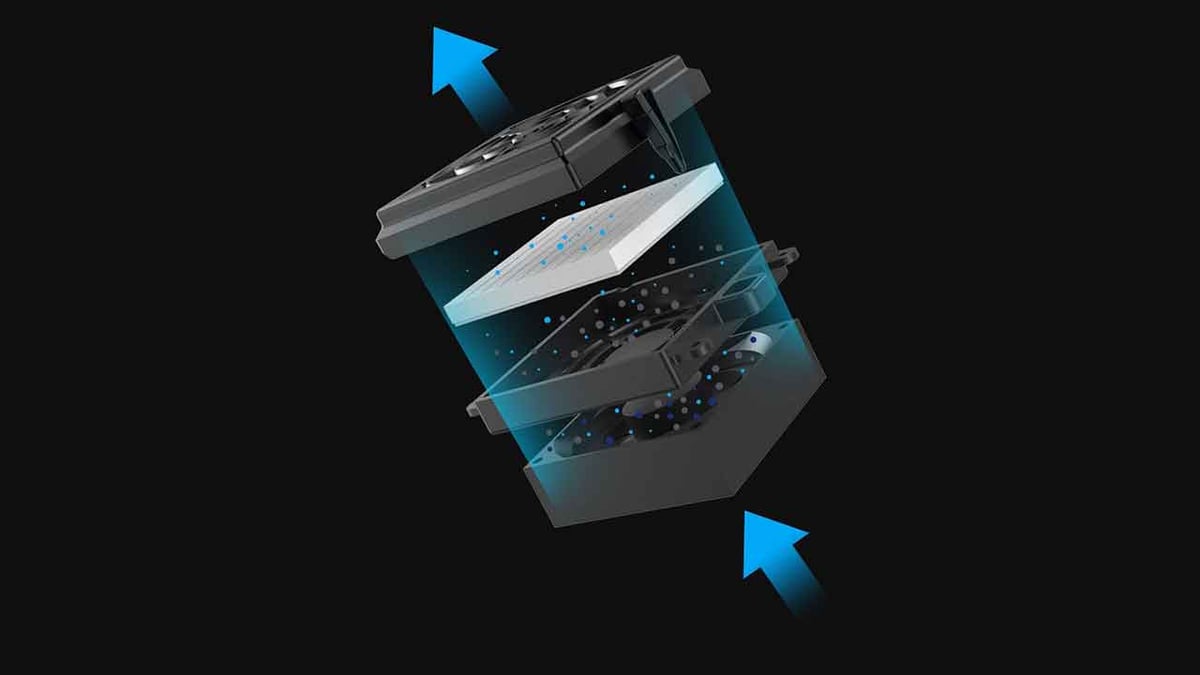
If you’re a home user without a dedicated printing space separate from your home or workspace, a built-in HEPA (High Efficiency Particulate Air) filter should pique your interest. Studies show that 3D printing emits toxic fumes when using certain materials like ABS. Though PLA is generally considered much safer, it’s still generally advised to keep 3D printers in a well-ventilated area, and open windows are no fun in February (except maybe for your heating company).
Keep in mind, air filters aren’t a total replacement for good ventilation. According to the EPA, HEPA filters eliminate upwards of 99.97% of aerosols at least 0.3 microns in size, but anything smaller will need a higher-end filter. Still, some filtration is better than none.
Energy-Saving Standby Mode
FlashForge briefly mentions an “energy-saving mode” in their marketing material that limits the Adventurer 4 to just 1 kWh of power consumption. We couldn’t find further details about the new mode, such as how it’s triggered, but it presumably enters standby automatically after some time idling or after print completion. Pretty handy for a printer that comes with Wi-Fi as stock.
“Leveling-Free” Build Platform
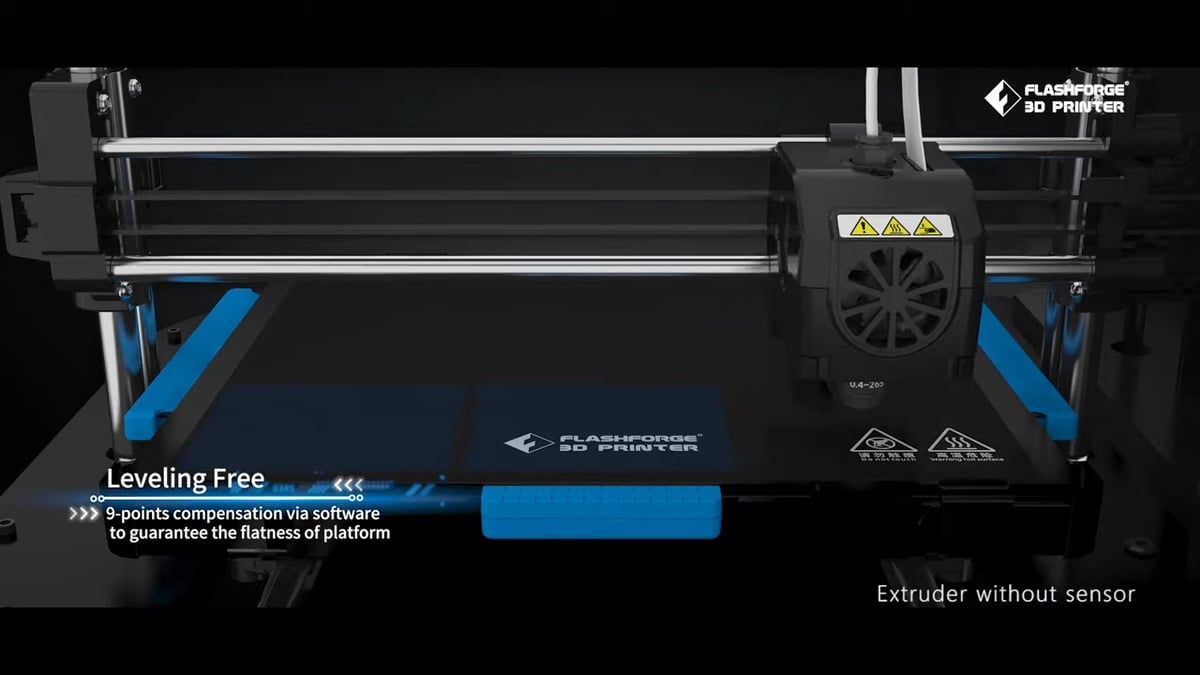
The Adventurer 4 has brought in a nine-point compensation to level a CNC-milled and fixed build plate. However, their promotional video specifies “extruder without sensor,” which begs some questions. We’d wager that if the hot end lacks any sensor like a touch probe, the system probably relies on user input to set the Z-height — traditional “mesh bed leveling.” Or, the Adventurer 4 could have something like a strain gauge – similar to the Anycubic Vyper or Creality CR-6 SE since some third-party retailers have listed the system as “auto-leveling” rather than “leveling-free.” Hopefully, there’s some form of detection since a manual mesh wouldn’t exactly be “leveling free.”
Quick-Release Nozzles
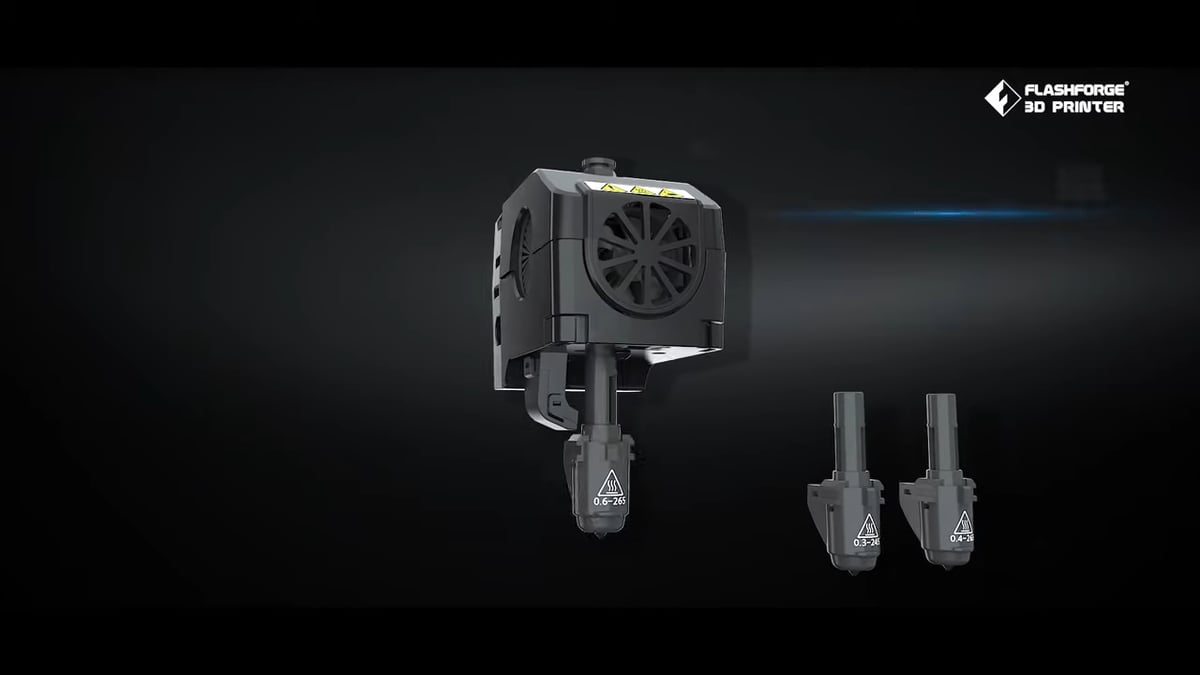
A very handy feature to carry over from past Adventurers: this new system is equipped with quick-release nozzles for toolless nozzle changes. FlashForge’s nozzles are held in place by a simple clip system that makes it easy to replace the nozzle to print with different diameters and temperatures.
The nozzles allow you to print with materials up to 265°C. In combination with the heated bed (110°C) and the enclosed build chamber, the Adventurer 4 seems fit to process some of the more advanced materials than your everyday filaments.
It’s worth noting this is a lingering restriction of sorts. Because of the quick-release system, users are locked into FlashForge’s proprietary nozzles — without a workaround or completely replacing the print head. Fortunately, the stainless steel nozzles (if reseller listings are to be believed) are pretty affordable at $22 to $39, and the benefits are probably worth their marginal cost. But though stainless steel is typically tougher than brass, it isn’t the hardest material around. They should print abrasive filaments like Nylon and carbon or glass-fiber composites fine, but will probably need to be replaced sooner than some of the stronger options out there.
Other Features
Enclosed 1 kg Filament Spool Holder
The Adventurer 4 has an enclosed, side-mounted, 1 kg filament spool holder. The previous Adventurer had a smaller spool enclosure that wouldn’t fit standard-sized 1 kg spools, but FlashForge has corrected that with this larger machine.
Bigger Volume
The Adventurer 4 had a growth spurt, it seems. The newest Adventurer’s build volume now sits at a reasonable 220 x 200 x 250 mm (compared to its predecessor’s 150 x 150 x 150mm). The added space makes room for larger models in one go, without the need to break them up into different pieces.
Filament Sensor & Power-Loss Recovery
Missing from previous Adventurers, the Adventurer 4 adds power-loss recovery. All the more important for a networked printer since it’s easier to miss a power flicker that’s stopped your print. Past systems did have a filament sensor, however, and the Adventurer 4 has kept it.
Built-in Camera
Also carrying over from previous Adventurers is the built-in camera, this time in HD. It’s another small feature that becomes more useful in networked printers, allowing you to keep an eye on print jobs from workstations in another room. Some users weren’t satisfied with the previous Adventurer’s camera, so it seems FlashForge stepped it up by offering HD this time.

Reviews
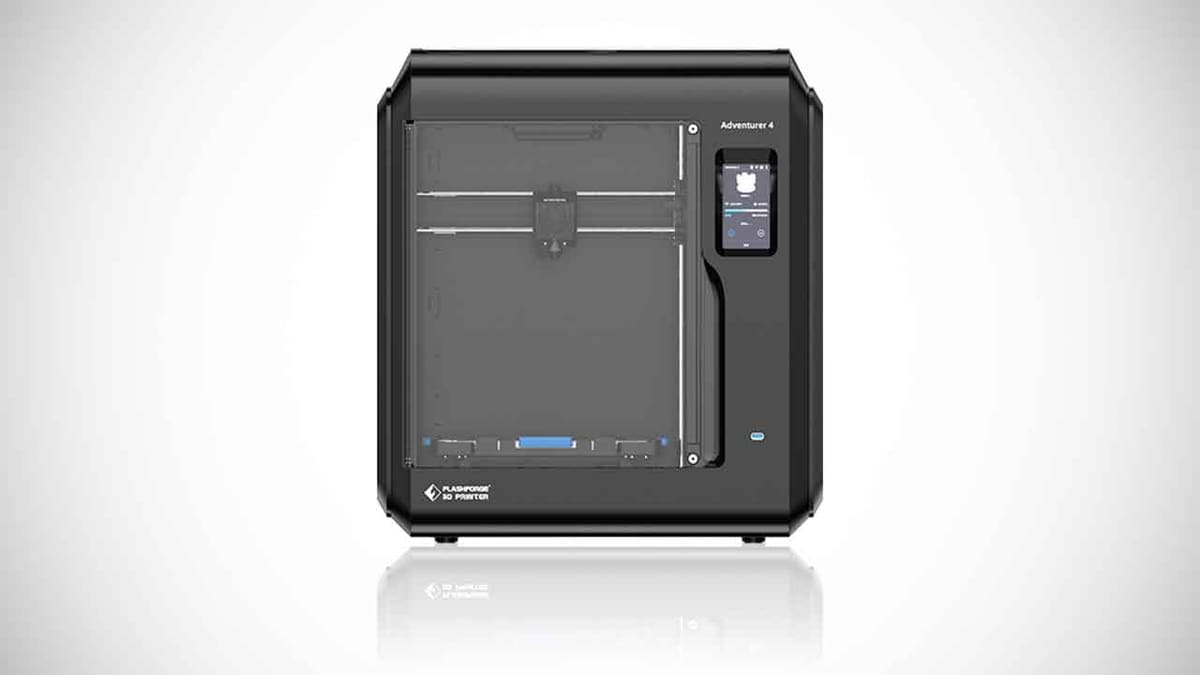
The Adventurer 4 has been available for quite a few weeks, and the first wave of reviews can be found online — mainly YouTube. The overall consensus seems quite positive, as the printer irons out some of its predecessor’s drawbacks, and with the larger build volume, enclosed build chamber, swappable nozzle design, and remote control, the Adventurer 4 does offer a lot for its sub-$800 price tag.
We have yet to review the Adventurer 4 ourselves, so stay tuned for our verdict of this promising-looking iteration.

Price
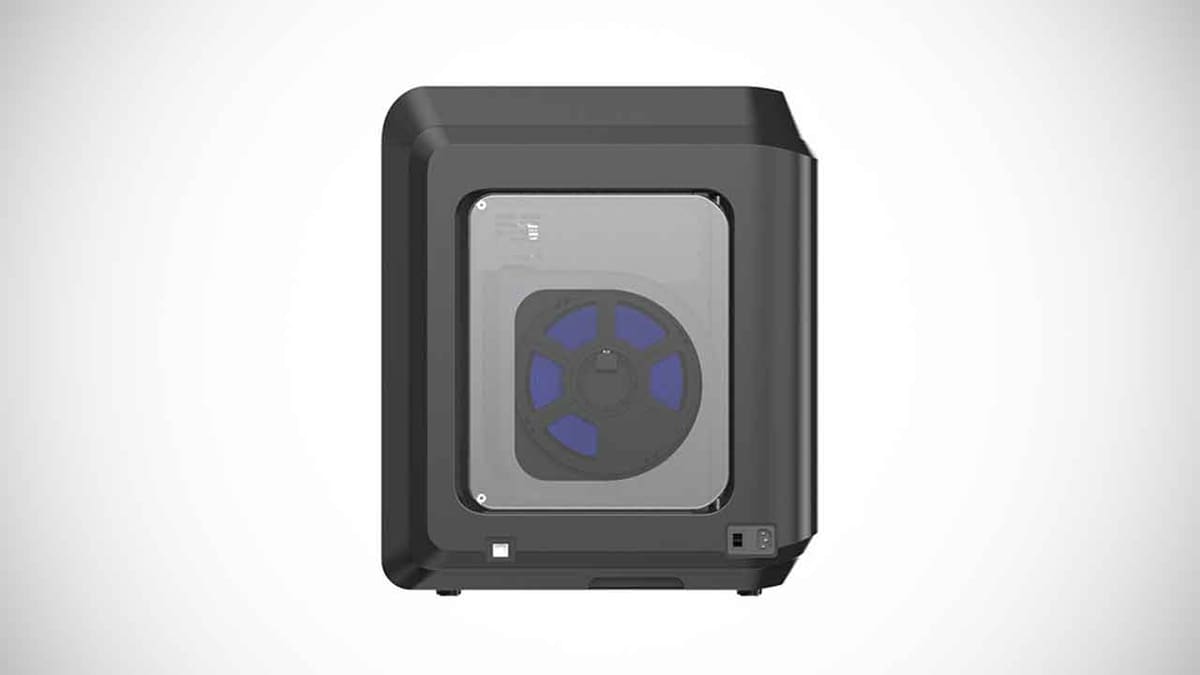
The FlashForge Adventurer 4 retails for $799 everywhere. Given how feature-loaded this system is, that’s rather impressive. Enclosed systems don’t tend to be very feature-loaded in budget price ranges, but this one is offering a lot. Admittedly, it is almost double the price of the Adventurer 3, which retails for just $369, but so much has changed that the two systems are almost incomparable.
Enclosed systems tend to start around the $500 mark, like the Creality CR-200B at ~$480, without a lot of what’s on offer in the Adventurer 4. The closest we can get to cost-feature parity is probably the Tiertime UP Mini 2, which includes a HEPA filter but has a seriously smaller 120 cubic-millimeter build volume for $599. So, if FlashForge’s latest is interesting to you, its features might be worth the ~$2-300 premium.

Tech Specs
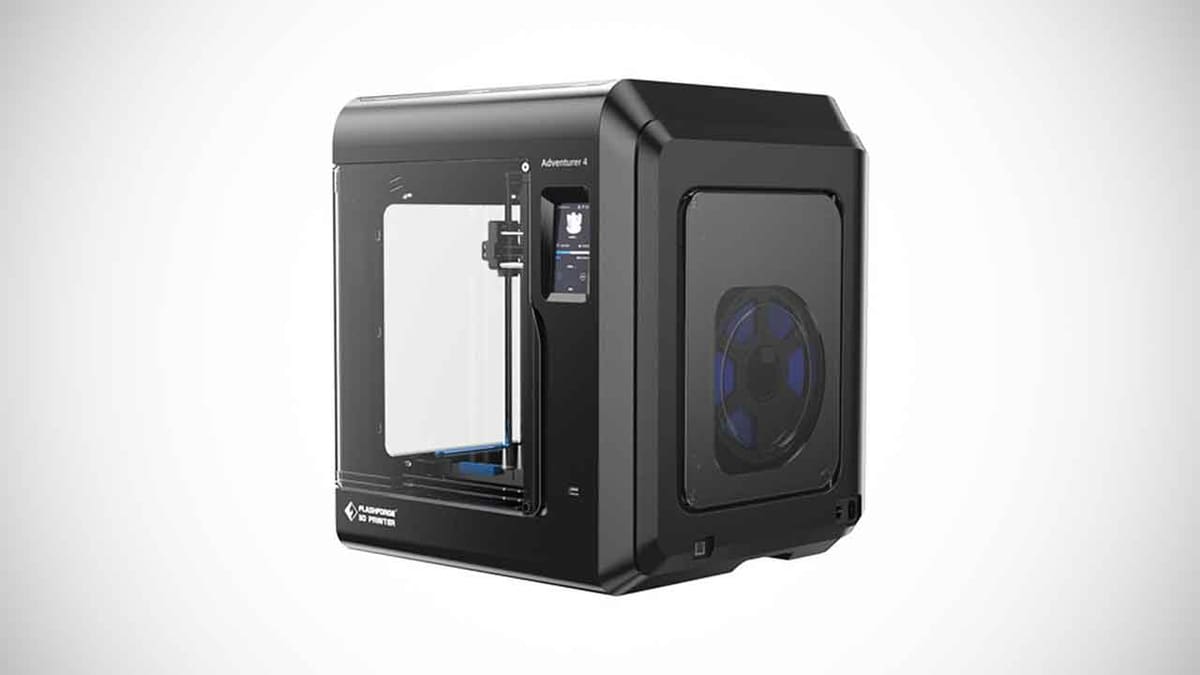
General Specifications
- Technology: Fused deposition modeling (FDM)
- Year: 2021
- Assembly: Fully-assembled
- Mechanical Arrangement: Cartesian
- Manufacturer: FlashForge
3D Printer Properties
- Build Volume: 220 x 200 x 250 mm
- Feeder System: Bowden
- Print head: Single nozzle
- Nozzle size: 0.4 mm (optional 0.3/0.6 mm)
- Max. hot end temperature: 265 °C
- Max. heated bed temperature: 110 °C
- Print bed material: Magnetic
- Frame: Aluminum
- Bed leveling: Fixed Bed Nine-Point Leveling
- Connectivity: USB, Wi-Fi, Ethernet
- Print recovery: Yes
- Filament sensor: Yes
- Camera: Yes
Materials
- Filament diameter: 1.75 mm
- Third-party filament: Yes
- Filament materials: PLA, ABS, PC, PETG, PLA-CF, PETG-CF
Dimensions and weight
- Frame dimensions: 500 x 470 x 540 mm
- Weight: 26 kg

Similar 3D Printers
Looking for an enclosed 3D printer? One with a pre-installed filter? Wi-Fi connectivity? Here are a few more enclosed options with some other similar qualities to the Adventurer 4:
Creality CR-200B
Like many of Creality’s offerings, the CR-200B keeps things pretty simple. It’s an enclosed printer with power-loss and filament detection but doesn’t bother with fixed beds, air filters, easy nozzle swapping, or what have you. It’s a good option for an enclosed system, but at ~$480, it’s not especially price competitive.
Anycubic 4Max Pro 2.0
The Anycubic 4Max Pro 2.0 is another enclosed printer that otherwise keeps things pretty simple. It’s around the same size as the Adventurer 4 with a build volume of 270 x 210 x 190 mm and includes an auto power shut-off option to save energy once prints are completed. Its standard price is $499 but is on sale for $359 at the time of writing.
Tiertime UP Mini 2
Tiertime’s UP Mini 2 offers more features than many comparable printers but sacrifices a lot of build volume for a higher price of $599. It’s the smallest printer here by far, with a print volume of 120 cubic millimeters, but it includes a HEPA filter and Wi-Fi connectivity. The small size does make it rather portable, and it includes a carry handle to that effect.
License: The text of "FlashForge Adventurer 4: Specs, Price, Release & Reviews" by All3DP is licensed under a Creative Commons Attribution 4.0 International License.
CERTAIN CONTENT THAT APPEARS ON THIS SITE COMES FROM AMAZON. THIS CONTENT IS PROVIDED ‘AS IS’ AND IS SUBJECT TO CHANGE OR REMOVAL AT ANY TIME.



